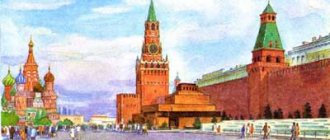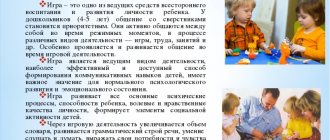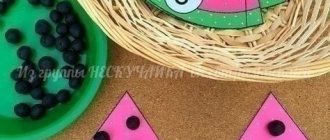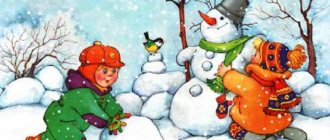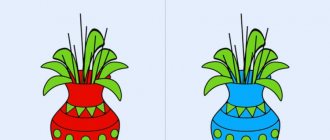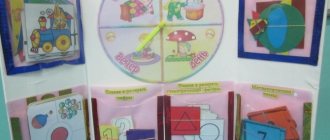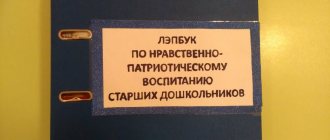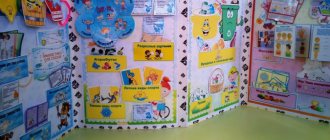"Circles of Llull" are a set of interconnected circles or rings in the shape of a pyramid. The creator of this complex of developments is the French monk Raymond Llull. The history of the game's creation began with work on the development of speech functions and logical thinking.
Currently, “Pacification Circles” are actively used by teachers and speech therapists in kindergartens. Thanks to its simple design and wide functionality, this product is understandable and easy to use, and is indispensable in the work of teachers.
How to use Lull circles?
Circles of Llull - what are they? This is a kind of pyramid with pictures, words or numbers. The arrow is located above the circles. All rings are movable and can be rotated in both directions. The rings are divided into several sectors. As the circles rotate, the arrow highlights certain sectors at each level. Sectors can contain pictures, riddles and entire sentences.
The player asks a question and spins the toy. The resulting combination can be interpreted as an answer to the question, and imagination and logic are associated with decoding.
Modern “circles” are divided by topic. Together with your children you can study “Fruits and Vegetables”, “Animals”, “Clothing” and so on. “Circles of Calm” are ideal for introducing a child to the outside world. In a playful way, preschoolers learn new words, their meanings and functions.
“Quiet Circles” are especially recommended for the following activities in a preschool educational institution:
- Familiarization with surrounding objects;
- Development of coherent speech;
- Knowledge of mathematics;
- Development of thought;
- Ability to establish logical connections between objects;
- Comfortable socialization and communication with people, etc.
You can create “Lulle circles” with your own hands. The topic is selected at the discretion of the teacher for a particular lesson.
TRIZ technologies in kindergarten Circles of Lullia.
TRIZ technologies in kindergarten Circles of Lull.
One of the effective pedagogical technologies for developing children's creative abilities is TRIZ - Theory of Inventive Problem Solving.
The purpose of using TRIZ in kindergarten is to develop, on the one hand, such mental qualities as flexibility, mobility, coherence, and on the other hand, research, the desire for novelty, language development and creative imagination.
I bring to your attention a game system of tasks and exercises based on the invention of Raymond Llull - “Circles of Calm”. Which is directly related to TRIZ technology. The invention received its name in honor of the name of its creator. In the 13th century, a French monk created a logic machine in the form of paper circles.
In my work, I use Llull circles as a play technique aimed at enriching a child’s vocabulary, developing cognitive activity, and expanding ideas about objects. They are effectively used in pedagogy to develop the linguistic, intellectual and creative abilities of children.
Lull circles are presented to preschoolers in the form of wonderful rings or mysterious circles. To work with children 3-4 years old, it is recommended to take only two circles of different diameters, 4 sectors in each.
When working with children 5-6 years old, two or three circles are used (4-6 sectors in each).
What else to read: DIY board games for children: ideas and master classes
Children of the 7th year of life cope with a sufficient number of tasks that use four circles of 8 sectors each.
It is recommended to play games outside of class in the form of play exercises (individually or with subgroups of children). Pictures on a specific topic are attached to the sectors.
The game should consist of two parts:
1) clarification of existing knowledge in certain areas (real task);
2) exercises to develop imagination (fantastic task).
Technological chain of the game:
1. In all areas of the circle, images or signs indicate any objects.
2. The activity is configured.
3. The circles are spinning, the children look at what images are on the circles under the arrow and name them.
4. Create a story based on the fantastic transformation.
The discs are suitable for all ages. For my older children I use games like “From what?”, “Professions”, “More or less”.
But the game is also suitable for young and middle-aged people. I have prepared games such as “Whose Tail?”, “Opposites”
, “Whose shadow is this?”, “Take a pair.”
Games with “Circles of Calm” can be divided into three types:
1. Matching games:
“Name the puppy.”
2. You play with an element of randomness in the placement of rings:
D / I “Zoom out, increase” D / I
3. Games to develop creative imagination:
D/I “Whose puppy?” D/E “seasons”
You can create this guide yourself. I bring to your attention step-by-step instructions.
For manufacturing you will need: a sheet of plywood 4 mm thick, chipboard spacers (for support), a threaded rod, washers, nuts.
Draw three circles with a diameter of 40, 20 and 10 cm and cut out the circles with a jigsaw.
Drill a hole in the center of each circle. I spray painted it. We divide the structure we have made into 8 parts - sectors. We attach a piece of linden to each part, after which there is a long and painstaking process of selecting images on which the linden is also attached.
The kids participated in cutting and pasting pictures for small Lilluj clubs.”
Therefore, Llull circles can be used in any area: to consolidate knowledge of numbers and the ability to count objects (on one ring there is a group of objects, on the other there is a corresponding number), knowledge of geometric figures (connect an object of a certain shape with a standard, for the development of phonemic hearing (link an image with a letter) , indicating the first sound in a word, and on the third ring you can depict a syllabic analysis scheme and count the syllables in words).
The uses for this technique are endless. Our teachers are actively studying it, the children really like it, and we also recommend it for you in your work.
Thank you for your attention.
Summary of the TRIZ game methodology “Circles of Lull” with children of the middle group
Marina Nikitina
Summary of the TRIZ game methodology “Circles of Lull” with children of the middle group
means in children on the topic of wild animals.
Educational: Enrich children's knowledge about wild animals, activate their vocabulary. Fix the names of their cubs (singular and plural)
.
Develop the ability to compose complex sentences with the conjunction “to”
.
Developmental: Develop: communication skills; the ability to reason on a given topic; the ability to listen to the teacher and your comrades.
Educational: To cultivate interest and love for the animal world.
Material: model " Circles of Lull "
,pictures: depicting animals, their babies, table.
Preparation for activity: studying the lexical topic “Wild Animals”
.
1. Create interest
(Children stand in a circle )
-Today, guys, I again invite you to play with “magic circles ”
.
Do you want to play?
— To start the game, take your seats around the table .
(Children pass and sit around the table )
- Sit comfortably, press your back against the back of the chair, put your hands on your knees and be attentive.
— Guys, look at “magic circles ”
. Who do you see in the pictures?
- These are wild animals. (List animals)
- Right. There are pictures of wild animals on the circles Today we will talk about them.
And now we will play the first game, which is called “Who has who?”
.
-This game is familiar to us. Let's remember the rules.
— Sonya, remind the guys what to do in this game?
“We need to name the animal and pick up the baby.”
- You need to name the animal in the picture that falls under the arrow on the big circle , pick up and name the baby on the second circle , and name the baby in the plural (many) circle
.
-Another interesting game called “Finish the Sentence”
.
I'll start the sentence and you need to finish it using the word "to"
.
For example: a hedgehog needs thorns to protect itself from enemies.
The hare needs long ears to (hear well)
.
A fox needs a fluffy tail to (keep warm in winter, confuse its tracks)
.
A bear needs claws to (dig a den, fish, climb steep slopes, trees)
.
A tiger needs stripes to (protect itself from enemies, not scare away its prey)
. Etc.
Game exercise on TRIZ “Good - bad”
- Now, let’s think - the hare has big ears, what’s good and what’s bad about them?
— Large ears help the hare to hear well, and in winter they freeze.
— What benefits do spines bring to a hedgehog?
- He curls up into a ball
- Do the wolf have sharp teeth?
- Does the fox have a long tail?
(Discussion by children )
Analysis of activities, summing up.
“Now let’s all go to the carpet.” (Children go out onto the carpet and stand in a circle )
— Guys, what did we learn new about animals today?
— What animals did Lera remember?
— Which game did Vanya like best?
— Did you guys like it? Do you want to play more with “magic circles ”
? Next time they will definitely help us learn something more interesting!
- We played today, but it’s time to finish,
Analytical report on self-education “Developmental games with children using the M. Montessori method” MUNICIPAL BUDGET PRESCHOOL EDUCATIONAL INSTITUTION “KINDERGARTEN “ZVEZDOCHKA” P. SCHOOLNOE” ANALYTICAL REPORT ON THE IMPLEMENTATION OF THE PLAN.
Application for children of the 2nd junior group “Amazing circles” Amazing circles Kuznetsova Irina The artistic and aesthetic direction develops children’s thinking, creativity, and accuracy. Integrated lesson in the middle group (using elements of TRIZ game technology) “Helping the gnomes” Integration of educational areas: speech development, cognitive development, social and communicative development, physical development.
Summary of the game using the TRIZ technique “For Bear’s birthday” Goal: formation of coherent speech in children when meeting a bear; development of children's characteristics of empathy; ability to think using techniques.
Abstract of GCD for children of the middle group “Journey into the past of the city” with TRIZ elements Educational area: cognitive development. Goal: Formation of primary ideas about the small homeland. Program content: Educational.
Abstract of a GCD on ecology using a socio-game methodology “Migratory and wintering birds” Summary of a GCD on ecology using a socio-game methodology. Topic: “Migratory and wintering birds” Author: Kovalskaya Elena Sergeevna.
Abstract of an educational activity using OTSM-TRIZ technology for children of the middle group on the topic: “Composing a story based on a series of pictures.” SYNOPSIS OF ORGANIZATIONAL AND EDUCATIONAL ACTIVITIES USING OTSM-TRIZ TECHNOLOGY FOR CHILDREN OF THE MIDDLE GROUP TOPIC: “COMPOSITION.
Work experience “Using TRIZ technology “Circles of Lull” in speech therapy work” Rukhlya N. With. :Circles of Lull in the work of a speech therapist Description of work experience in using TRIZ technology “Circles of Lull” in speech therapy.
Educational and methodological manual “Rings of Lull” (TRIZ technology) “The questions began to spin, They connected with the signs. You choose a picture and give the answer quickly. " Dear colleagues! I present. Magic circles Lullia! Hello colleagues! Once, at one of the pedagogical councils, our methodologist told us about various types of didactic games, including.
Source
Examples of games with “Lulli circles”
"Animals and Cubs"
Animals are depicted on the upper ring, and their young are depicted on the large one. The teacher names any animal. By turning the circles, the child must find a child named animal. For example, a kitten is paired with a cat, and a puppy is paired with a dog. The player’s task is to find each child his mother and vice versa.
"Fairy Tales and Heroes"
The rings depict heroes of famous fairy tales and objects belonging to them. The teacher names the hero, and the child looks for what the character uses in the story. For example, Baba Yaga is a stupa or a broom, Pinocchio is a key, etc. The children's task is to find their own thing for each hero.
What else to read: Passport of the multifunctional teaching aid “Smart Cube”
"Count"
The rings represent objects and numbers. How to play? The teacher rotates the arrow and names the released image. The child’s task is to count how many objects are in the picture and name the correct number. For example, two balls, four books, etc.
"Sochetayka"
The rings depict random objects: trees, colors, words. The teacher spins the arrow. The children’s task is to tell how to connect the fallen images. For example, you will get a pair of wooden ones - red. This means that the leaves change and turn red in the fall. Do the same with the following combinations.
Lull's Circles is a simple educational game that has a positive effect on children's brain activity. In a playful way, the baby not only stimulates thinking, but also spends pleasant and funny moments with friends.
Didactic game "Magic Circle"
Didactic game "Magic Circle"
Goal: To introduce children to the variety of relationships in the ecosystem. Material: The playing field consists of two circles (diameter 20 and 30 cm). Along the circumference of a large circle there are boxes filled with natural materials (cones, pebbles, feathers, berries, models of the sun, water, air, small pictures of natural objects). A set of pictures: forest, pond, field in different seasons; animals.
Rules of the game:
The driver selects a picture, which he places in the center of the upper circle and turns the arrow. Children take turns opening the boxes to which the arrow points, name the object in them and explain the relationship between this object and the picture in the center of the upper circle. The child who makes the most connections wins.
Didactic game "Miracle Tree".
Goal: To consolidate children’s knowledge about the distinctive features of plants and their constituent parts. Material: The playing field consists of ten boxes connected on one plane. The boxes contain birch bark, acorns, rowan berries, spruce and pine cones, cut wood, leaves, moss, spruce and pine needles. Each box is closed with a lid with numbers from one to six.
Rules of the game:
Children take turns taking numbers out of the “bag”, opening the corresponding box and guessing the plant by its part, explaining the functional significance of this part for the whole plant. For the correct answer, the child receives a chip. The one with the most chips at the end of the game wins.
Didactic game “Magic Flower”
Goal: To consolidate children's knowledge about the importance of plants in human life; develop skills in reading ready-made symbols, instill in the child the need to take care of plants and their health.
Material: Daisy petals cut out of paper, each with a cipher symbol drawn on it; cube.
Rules of the game: The child is asked to read, select a petal with symbols of the meanings of plants in human life (No. 1 - purifying the air, No. 2 - telling the time, No. 3 - predicting the weather, No. 4 - decorating the surrounding world, No. 5 - creating a mood, No. 6 - use as medicine); The one who cannot decipher the symbol on the petal is eliminated from the game.
Option: Each player has his own “flower”. The presenter makes riddles based on the symbols. The child guesses and lays out the petals. The one who completes the task correctly and quickly wins.
Didactic game “Birds in nature”
Goal: To develop in children a conscious understanding of the relationships in nature. Develop the ability to establish a sequential relationship consisting of several links (ecological pyramid).
Material: Wood model with images of birds. Cubes with pictures: earth, water, sun, air, trees of different species, bird food, birds of different species. Reference pictures: tree booth, bark, stump, cage, lake, worm, frog, pine cone, mouse, fish, earth, water, sun, air.
Rules of the game:
Choose any of the birds in the picture or invite your child to do it. Ask questions: What kind of bird is this? Where does he live? (Appropriate reference pictures are provided.) Find cubes with pictures of trees. • What does a tree need to grow? (Earth, water, sun). • Find cubes with the image of earth, water, sun. Determine their place in the ecological pyramid. (Children find the corresponding cubes and place them at the base of the pyramid under the cubes with trees). • What does the bird eat? (Appropriate reference pictures are provided) • Where does he find food? The result should be a pyramid that is built in accordance with the floors of nature. What do you think will happen to the bird if the water disappears? (earth, sun, air).
Didactic game “Forest Dwellers”
Goal: To learn to distinguish and name the characteristic features of wild animals, to establish connections between the habitat and the way of life and appearance of animals.
Material: Pictures: animals, “houses”, babies, animal food.
| An outline for writing descriptive stories about animals. |
Rules of the game:
| The child is offered pictures of animals. Name the animals. Where do they live? Choose and describe the animal according to the diagram. Find a baby for each animal. Whose family is walking in the clearing? (bear, wolf...) Choose their houses for the animals. Who lives where? What do animals eat? Choose pictures. |
Didactic game "Ecotables"
Goal: Systematize knowledge about the animal world. Develop the ability to use graphic symbols. Develop logical, imaginative thinking.
Materials:
- Tables with graphic symbols;
- Subject pictures depicting representatives of the animal world.
Rules of the game: 1. The child selects a table with graphic symbols and explains which animal is encrypted. 2. Using the table, compose a consistent story about the animal.
Didactic game "Birch"
Goal: To teach children to establish cause-and-effect relationships and the interdependence of natural phenomena.
Material: Circle with a diameter of 80 cm on a stand. In the center of the circle, on one side there is an image of a cheerful birch tree, on the other side there is an image of a sad birch tree. 10 removable parts-symbols with drawings of the birch tree’s “friends”: a bird, the sun, a mushroom, clean water, an earthworm, a ladybug and its larvae, soil, a moderate wind, a child watering a birch tree. 10 details-symbols of birch tree “pests”: chafer larva, aphid, caterpillar, contaminated soil, hurricane, burning sun, lip mushroom, leaf beetle, dirty water (contaminated with industrial waste), a child breaking tree branches.
Rules of the game: we invite the child to choose a symbol detail, correlate it with a “cheerful” or “sad” birch tree, explain how this affects the birch tree and why. Example: “This is a bird, it should be placed next to a cheerful birch tree, because the bird eats insect pests living in the bark and under the bark of the birch tree.” “Chafer beetle larva. It should be placed next to the sad birch tree, because the larva lives in the soil and feeds on tree roots. As a result, the trees wither and die.”
| Sad birch tree | Merry birch |
Didactic game “Picture of Nature”
Goal: To expand children's knowledge about wildlife, the habitats of living organisms (water, land, air).
Material: Three-dimensional tetrahedral pyramid depicting water, earth, air; removable badges with pictures of animals, plants, birds, fish, insects.
Rules of the game: We invite children to look at the edges of the pyramid and tell what kind of habitat it is. Choose from among the icons pictures of living creatures that live in each specific environment, place them on the corresponding faces of the pyramid and explain your choice. Example: “This is the sea. Fish, marine mammals, crustaceans, and various algae live in the sea. I will choose a picture of dolphins and put them in the sea, because they are marine mammals.”
| Land, air, water | Water, air, land |
"Frog traveler"
Goal: To generalize the knowledge of preschoolers about objects of living and inanimate nature, about their features, properties, characteristic features, and relationships. Material: Playing field, cards depicting objects of living and inanimate nature for various types of generalizations (humans, domestic and wild animals, animals of the north and hot countries, birds, insects; plants: berries, trees, flowers; rainbow, clouds, snow, rain ...), schematic cards - symbols with various signs of natural objects and phenomena (wing - paw, forest - house, claws - hooves, spring - winter...), cube, buttons - frogs, chips - insects.
Option 1: “Frog riddles”
Goal: To learn to classify objects of living and inanimate nature according to a given criterion. Progress of the game:
Children lay out the images, focusing on the designation cards. (For example: on the left side of the playing field there is a card - the designation “claws”, on the right - “hooves”. Children work on generalizing the concepts of “predators” and “herbivores”)
Option 2: “Curious frog”
Goal: To identify the interaction between humans and natural objects, between living and inanimate objects. Progress of the game:
Around the “person” card, images of objects of living and inanimate nature are chaotically laid out. The child throws the frog, identifies the positive and negative connections between the dropped object and the person (For example: A cow gives milk to a person, but can butt painfully, etc.). In the center, instead of a “person” card, you can place any other card (for example, “fox”), then children will identify connections between various natural objects (For example: a fox can hide behind a stone. A fox is looking for a mouse under a stone.)
Option 3: “Little tricks”
Goal: Determine ways of adaptation of living organisms to environmental conditions. Progress of the game:
Using a cube, counters and moving in the direction of the arrows, the child names ways in which living organisms adapt to their environment (For example: Butterflies have a long proboscis to extract nectar from flowers.)
Option 4 “The frog is looking for friends”
Goal: To develop associative thinking based on identifying common properties and characteristics of natural objects. Progress of the game:
By throwing a button or a frog onto the playing field 2 times, the child determines the connection between the dropped objects, focusing on their common characteristics (For example: Frog and snow are cold, pike and tiger are predators...)
Option 5 “Frog - talker” Goal: To develop coherent speech based on the use of environmental information available to children. Progress of the game:
Using a cube, counters and moving in the direction of the arrows, the child makes complex sentences about the dropped object (For example: A bee is an insect that lives in a hive. An elephant is an animal that has a trunk...) By playing with cards turned downwards, the child can describe a dropped object without naming it. A child can guess an object using only pantomime. In all game variants, for correct answers, children receive chips with images of bugs and worms. The one whose frog has the most insects wins.
Didactic game “Who is friends with the tree?”
Goal: To reinforce the idea that a forest is a community of plants and animals that live nearby and depend on each other.
Material: Panel with the image of a forest. Cards with pictures of animals, birds, insects. A cube with circles of red, green, blue and yellow or a bag with multi-colored buttons.
Rules of the game:
There is a pano on the table and cards with pictures laid out. Children take turns throwing the dice. If the side of the cube with a green circle appears, the child takes a card with the image of any animal, places it on the panel and tells why this animal is friends with the tree. For example: This is a squirrel. She lives in a hollow tree and sometimes builds a nest herself. The squirrel also collects spruce and pine cones, hangs mushrooms on the branches - makes supplies for the winter. If the color turns up blue, he chooses a bird; red color – insect; yellow – a bird, insect, animal that does not live in the forest and motivates its choice.
Didactic manual “The Journey of Droplet Kapa”
Goal: To introduce children to the water cycle in nature.
Material: Pano diagram, cards depicting: snowflakes, rain, icicles, boiling kettle; puddles, water tap, snowdrift.
Fairy tale version:
Children sit around the panel. The teacher tells a tale about the journey to the little droplet “Kape”. Once upon a time there was a small drop. Her name was Capa. Here she is! (showing a card with a picture of a droplet). One day the droplet felt sad and decided to go on a trip. At this time, a rain cloud floated across the sky, and a droplet quickly jumped onto it. I sat for a little while, looked around and saw flowers below. They were so bright, so beautiful that the droplet definitely wanted to go to them. It turned into rain and fell on a flower. The droplet really liked being friends with the flowers. But Capa was very curious, she wanted to travel further, and she decided to jump into the lake. I swam there a little, played with the fish, and next to the lake there grew a large, very large tree. The roots of this tree loved to drink water from this lake, and our droplet, along with some water along the roots and along the trunk, got to the very top. She sat and swayed and sang her favorite song. But the sun came out, and the droplet turned into a white cloud. This is how our little Capa has been traveling ever since.
As the story is told, the teacher moves the droplet in a circle from object to object. • Where can we meet Kapu? (in a tap, in a puddle, in a snowdrift, etc.) - cards are displayed. • What kind of drop can there be? (liquid, gaseous, solid) – cards are displayed. • What type of tap water is there? (cold and hot) • What benefits does a drop bring? • What happens if the droplet disappears?
Get text
